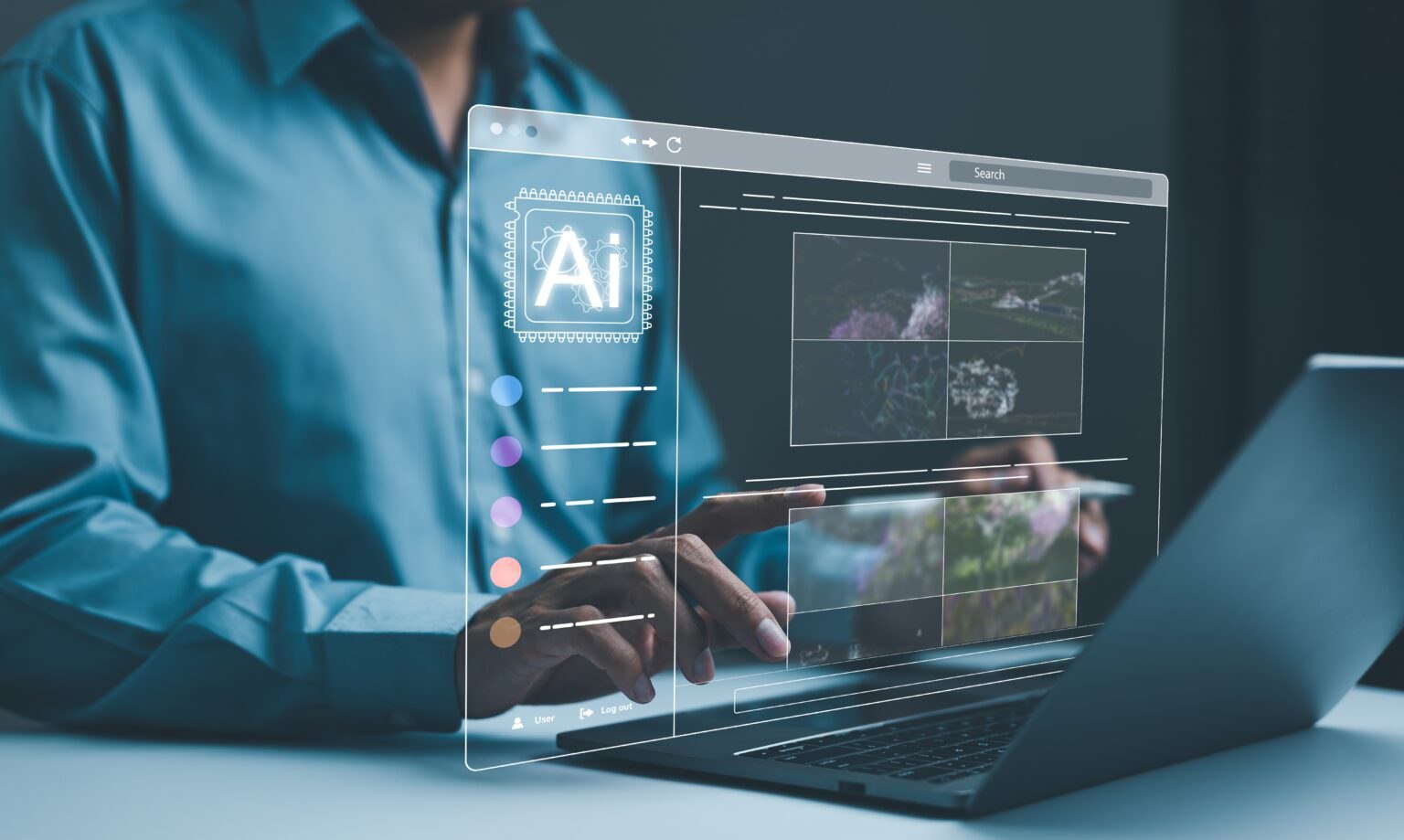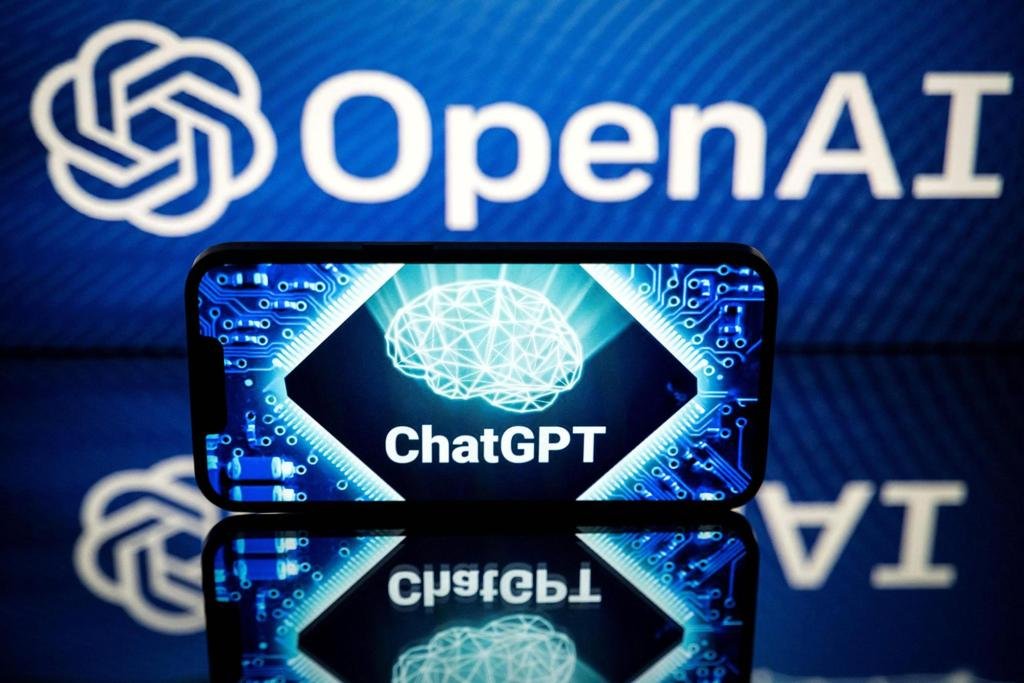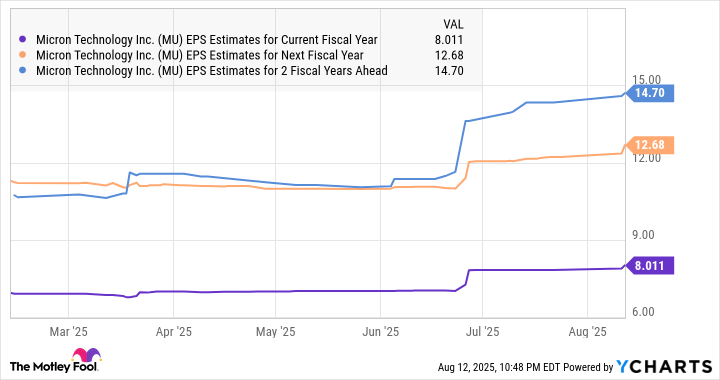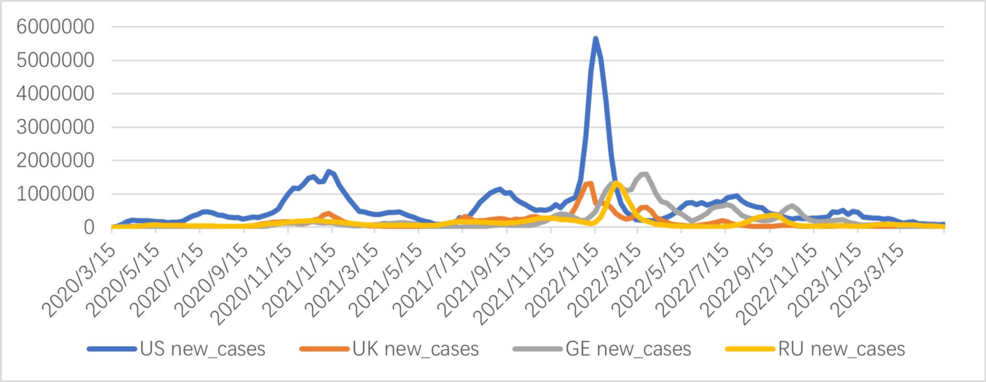AI Insights
This Artificial Intelligence (AI) Stock Is Growing Fast and Still Trades at Just 10 Times Earnings

Semiconductor maker Micron just raised its guidance thanks to the booming AI data center demand for its memory chips.
Micron Technology (MU -3.70%) is playing a central role in the adoption of artificial intelligence (AI) technology: Its memory chips are being used by top chip designers such as Nvidia and Advanced Micro Devices in their data center graphics cards.
Micron’s high-bandwidth memory (HBM) suits the technical needs of AI accelerator graphics processing units (GPUs) because they are capable of moving huge amounts of data with low lag, and are more energy efficient than conventional memory chips. And given the high demand for AI chips, demand for Micron’s HBM chips has also been robust, which explains why its growth has been remarkable in recent quarters.
Importantly, it appears Micron’s terrific growth will persist thanks to its lucrative opportunity in the HBM space — and its latest guidance update provides further evidence to that effect.
Image source: Getty Images
Micron Technology’s AI-fueled growth is just getting started
On Monday, Micron increased its guidance for its fiscal 2025 fourth quarter. For the period, which will end Aug. 28, it now expects revenues of $11.1 billion to $11.3 billion, up from a range of $10.4 billion to $11 billion previously. At the midpoint, that’s a boost of $500 million. Additionally, management bumped up its non-GAAP earnings guidance from $2.50 per share to $2.85 per share. Those figures would equate to a year-over-year increase of 44% in revenue and a 141% jump in adjusted earnings per share.
Micron management says that “improved pricing, particularly in DRAM, and strong execution” are the reasons behind its improved guidance. Booming demand for HBM is a key factor that’s allowing memory makers to increase prices. According to one estimate, the HBM market’s revenue could double in 2024 to $34 billion, driven by a combination of higher shipments and increased pricing.
Specifically, production capacity constraints are expected to push up the price of HBM by 15% to 20% in the calendar third quarter, which would be sharper than the 5% to 10% growth seen in the previous quarter. At the same time, the next iterations of AI graphics cards designed by Nvidia and AMD will be equipped with bigger HBM chips.
Nvidia, for instance, is packing 288 gigabytes (GB) of HBM into its Blackwell Ultra B300 GPU, up from the 192GB configuration of the B200. Similarly, AMD is bumping up the HBM capacity of its MI355X and MI350X accelerators to 288GB; the previous generation MI325X had 256GB.
What’s more, AMD is planning to increase the HBM capacity of its next-generation MI400X GPUs to a whopping 432GB.
Given all that, demand for HBM is likely to remain solid. Micron’s peer SK Hynix is forecasting annualized increases of 30% in the HBM market through 2030. AI, therefore, can be expected to remain a solid long-term growth driver for Micron, especially considering the company’s improving share of this market.
The memory specialist says it’s supplying HBM chips “in high volume” to four major customers, which indicates that custom AI chipmakers such as Broadcom and Marvell Technology are also among its big clients. Not surprisingly, Micron’s HBM market share is expected to jump to 24% by the end of 2025 as compared to around 20% earlier this year.
That potential improvement in Micron’s market share, along with the outstanding growth of the HBM market, explains why analysts have increased their revenue growth expectations from the company.
MU Revenue Estimates for Current Fiscal Year data by YCharts.
Even better, Micron’s healthy top-line growth will drive a big jump in the company’s bottom line since demand for HBM is outpacing supply. The favorable supply-and-demand dynamic should lift memory prices and supercharge Micron’s earnings, which is why buying the stock right now is a no-brainer.
Micron stock is too cheap to ignore
Micron reported $1.30 per share in earnings in its fiscal 2024. The following chart makes it clear that its earnings are on track to grow significantly in the current fiscal year and beyond.
MU EPS Estimates for Current Fiscal Year data by YCharts.
The best part for investors is that Micron stock is trading at just 10 times forward earnings, which is dirt cheap considering the earnings growth that it’s projected to deliver. Its forward earnings multiple is significantly lower than the tech-laden Nasdaq-100 index’s multiple of 30.
Ideally, the market will reward the AI-fueled growth that this chipmaker is set to deliver with a higher earnings multiple. For instance, an earnings multiple of even 20 after a year could send its stock price to $244 (based on its fiscal 2026 earnings estimate of $12.22 per share). That would be nearly double its current stock price.
So, investors should consider buying this AI stock hand over fist as it has the potential to fly higher, even after recording a 52% gain so far in 2025.
Harsh Chauhan has no position in any of the stocks mentioned. The Motley Fool has positions in and recommends Advanced Micro Devices and Nvidia. The Motley Fool recommends Broadcom and Marvell Technology. The Motley Fool has a disclosure policy.
AI Insights
Artificial Intelligence Becomes Mandatory Discipline in All Kazakh Universities

ASTANA — Artificial intelligence has become a mandatory discipline across all universities in Kazakhstan. A total of 93 universities have already integrated AI into their academic programs, while 20 institutions have launched 25 new educational tracks, said Deputy Minister of Science and Higher Education Gulzat Kobenova.
Photo credit: gov.kz
According to her, this initiative will not only strengthen the education system but also bring Kazakhstan closer to leading countries in AI adoption, such as China, Finland and the United States, reported Khabar TV channel on Aug. 28.
Starting from the new academic year, the Aisana project will be included in university curricula, enabling every student to gain hands-on experience with AI technologies. So far, 390,000 students have completed a specialized AI course, with 3,000 of them earning official certificates.
Earlier this month, President Kassym-Jomart Tokayev called for urgent action to make AI a driver of national development.
One of the largest AI projects in Kazakhstan is the creation of the Alem.ai center, which is planned to host an educational center for school children and a startup campus. The center is expected to boost exports of AI solutions to $5 billion by 2029.
AI Insights
Application and Comparative Study of Generative Artificial Intelligence for Epidemic Prediction of Coronavirus Disease
AI Insights
Brave new world of AI casts shadow over Labor Day – Sentinel and Enterprise

As artificial intelligence reshapes the workforce, we mark Labor Day Weekend in the AI age with both the traditional recognition of workers’ achievements and a new reflection on the future of labor.
AI’s creating a new economic dynamic that profoundly affects the workplace. On this particular holiday weekend, the impact of these changes should be a primary concern for workers and policymakers.
Leading into Labor Day, Massachusetts business and technology leaders hashed out strategies to strengthen the state’s competitive edge in artificial intelligence and tackle emerging skills gaps.
More than half of the individual skills considered core parts of the top 15 job types “could face moderate-to-high disruption from AI,” according to a report from the Massachusetts High Technology Council and the Boston Consulting Group, highlighted Wednesday during a virtual briefing.
The most immediate impacts could occur in structured jobs with repetitive routines, including office clerks and accountants, “where 40-50% of core skills are at risk of high-to-complete disruption as GenAI automates tasks like scheduling, recordkeeping, invoicing and compliance checks,” the report states.
The report also discusses how AI will redefine other traditional jobs, including health-care professionals who can use AI to flag clinical risks, educators who can use analytics to personalize instruction, and financial analysts using generative AI to detect fraud.
Ahead of the start of the school year, the Department of Elementary and Secondary Education last week released guidance on using AI responsibly in schools, including in ways that are safe and ethical.
Given this transformative shift, employers have begun recruiting workers for “bilingual roles,” which involves AI fluency in areas like AI models, AI-based automation and AI-assisted learning tools.
But the report shows Massachusetts has a “retention problem,” with only 40% of AI-trained graduates staying here, compared to 80% in New York and California, said Anna Senko, project leader at the Boston Consulting Group.
“We also know that peer states are really investing quite aggressively in AI infrastructure and workforce pipelines as well, which will increase that competition for talent,” Senko said. “So we’re at a crossroads here in Massachusetts, and it isn’t about adopting AI for AI’s sake, but really making sure that AI strengthens Massachusetts’ competitive advantage, especially in some of our top industries.”
The report recommends the commonwealth invest in the talent pipeline from K-12 classrooms to those in mid-career learning new skills; bolster shared AI infrastructure and strategic partnerships; compete for federal AI dollars; and deploy grants, tax incentives and other tools to businesses.
The 2024 economic development law allocated $100 million for the Massachusetts AI Hub. Since launching, the hub has trained teachers in using AI, taught high school students how to use Python programming language, awarded grants in sectors like health care and manufacturing, and organized workforce development programs, said Massachusetts AI Hub Director Sabrina Mansur.
In New York, Empire AI is supported by more than $500 million in public and private funding. Connecticut and New Jersey are also launching AI hubs with smaller investments, according to the report.
“We need to move at the speed of AI in business because we’re not competing sufficiently with peer states, even though we have, I think, the best mix of resources of any commonwealth or any state,” said Chris Anderson, Massachusetts High Technology Council’s president. “And therefore, we need to help push government partners to join us, to be responsive in the right areas at the right time where it makes sense.”
The report from MHTC and BCG indicates that AI will trigger a variety of job disruptions. While clerks and accountants may see the biggest impact, even cashiers, retail salespeople, registered nurses, waiters, fast-food workers, and janitors and cleaners will feel the impact.
“If you think about buildings becoming smarter, predictive maintenance schedules, space use tracking and even autonomous cleaning pods, it’s easy to see how the responsibilities and ways of working a janitor role would fundamentally shift,” BCG consultant Trula Rael said.
We’d urge the state’s brightest minds to also concentrate on AI’s generational impact on displacing countless highly educated college grads just entering the workforce.
According to a CBS MoneyWatch report, artificial intelligence is already replacing entry-level workers whose function can be performed by generative AI tools like ChatGPT.
Early-career employees in fields most exposed to AI have experienced a 13% drop in employment since 2022, compared to more experienced workers in the same fields and people in sectors relatively unaffected by the fast-emerging technology, according to a recent working paper from Stanford economists Erik Brynjolfsson, Bharat Chandar and Ruyu Chen.
The study adds to the growing body of research that confirms the spread of generative AI in the workplace has especially disrupted the job market for younger workers, the report’s authors said.
The research highlights two fields in particular where AI already appears to be supplanting a significant number of young workers: software engineering and customer service. From late 2022 to July 2025, entry-level employment in those areas declined by roughly 20%, according to the report, while employment for older workers in the same jobs grew.
As a society, we must confront this seismic workforce shift by threading the needle that accepts AI’s continually increasing role in our daily workplace lives while not leaving our next generation of skilled labor behind.
-
Tools & Platforms3 weeks ago
Building Trust in Military AI Starts with Opening the Black Box – War on the Rocks
-

 Ethics & Policy1 month ago
Ethics & Policy1 month agoSDAIA Supports Saudi Arabia’s Leadership in Shaping Global AI Ethics, Policy, and Research – وكالة الأنباء السعودية
-

 Events & Conferences3 months ago
Events & Conferences3 months agoJourney to 1000 models: Scaling Instagram’s recommendation system
-

 Business2 days ago
Business2 days agoThe Guardian view on Trump and the Fed: independence is no substitute for accountability | Editorial
-

 Jobs & Careers2 months ago
Jobs & Careers2 months agoMumbai-based Perplexity Alternative Has 60k+ Users Without Funding
-

 Funding & Business2 months ago
Funding & Business2 months agoKayak and Expedia race to build AI travel agents that turn social posts into itineraries
-

 Education2 months ago
Education2 months agoVEX Robotics launches AI-powered classroom robotics system
-

 Podcasts & Talks2 months ago
Podcasts & Talks2 months agoHappy 4th of July! 🎆 Made with Veo 3 in Gemini
-

 Podcasts & Talks2 months ago
Podcasts & Talks2 months agoOpenAI 🤝 @teamganassi
-

 Jobs & Careers2 months ago
Jobs & Careers2 months agoAstrophel Aerospace Raises ₹6.84 Crore to Build Reusable Launch Vehicle




